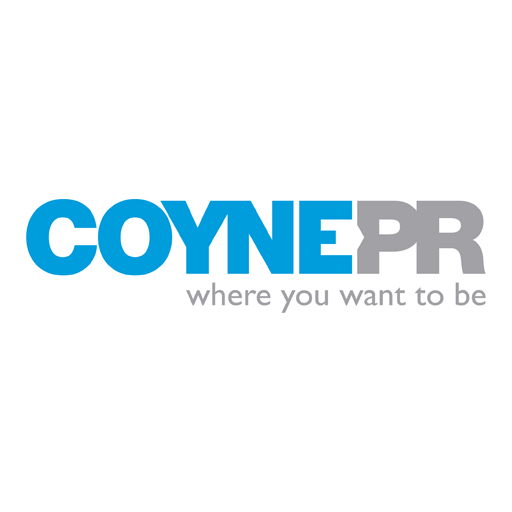Coyne PR 14 Sep 2015 // 2:23PM GMT
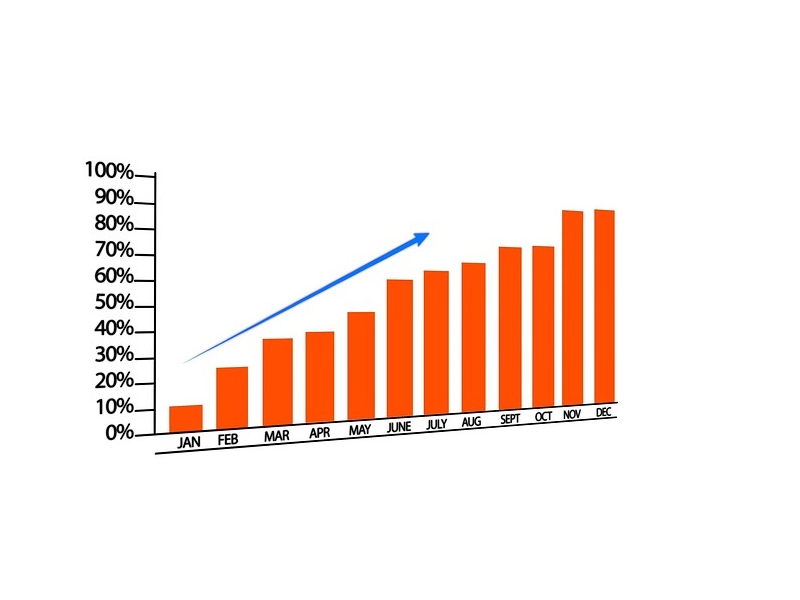
In his article on “How CEOS Can Adopt a 21st – Century Approach to Communication[i]” Walter Montgomery explains the steps executives must take to ensure their organization both survives and thrives by using best-in-class communication practices. However, he also notes that many of us in the communications field are laggards who fail to appreciate the sharp analytical tools of neuroscience, economics and statistics.
He couldn’t be more correct. So, in Part 1 of this paper, I introduced the DIPP™ Index, developed by Mu Sigma in Chicago[ii]. The model presents a commonsense approach to understanding the relationship between different analytical models:
- Descriptive analytics – What’s happened?
- Inquisitive analytics – Why did this happen?
- Predictive analytics – What can we do in the future?
- Prescriptive analytics – What should we do about it?
In Part 2, I'll provide examples of how these different models contribute to smarter communications solutions so B2B and B2C practitioners can recognize and apply relevant analytical frameworks.
PR professionals have to deal with statistics frequently – particularly in this age of “big data.” Our clients are leveraging the power of data analysis to minimize the guesswork of their marketing decisions. Analytics can advance integrated marketing efforts to harmonize marketing messages, optimize marketing budgets, and create a foundation for further data analytics.
Therefore, communications professional of every stripe must be prepared to deal with the increasing use of analytics. But, while demand for analytics knowledge is growing, there are few communication practitioners who have the technical training to comprehend and apply analytics with any confidence.
Understanding how to present and interpret statistics is often critical to creating a compelling and relevant press release, demonstrating the result of a communications initiative, or reporting the ROI of an integrated campaign.
- Descriptive analytics helps us understand what happened in the past. The past can be from one minute ago to a few days, a few weeks, a few months or a couple of years. This data helps clarify the relationship between the company/product and their stakeholders/consumers. Typical examples of descriptive analytics include dashboards and KPI reports[iii].
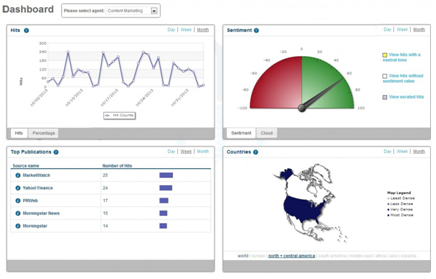
- Inquisitive analytics help validate (or reject) different business hypotheses using survey-based statistical analysis. One leading source of inquisitive analytics is the survey of Generally Accepted Practices (GAP) by the Annenberg School at the University of Southern California. Analysis derived from the GAP survey helps practitioners’ benchmark performance and gain insight into how to create messages that matter. This example was taken from GAP VII: Seventh Communications and Public Relations Generally Accepted Practices Study (Q4 2011 data)[i] which was an online survey of 620 top PR professionals. The study applied Factor Analysis, which is a statistical model where the values of observed data are expressed as functions of a number of possible causes in order to find which causes are the most important. This example has determined four clusters of PR outcomes deemed as the “most important measures” by survey respondents. Outcomes measures (Stakeholder, Strategic and Bottom Line) were linked to indicators of survey respondents’ definition of success while traditional PR outputs (AVEs, circulation, impressions, content analysis and clip counts) were deemed less important.
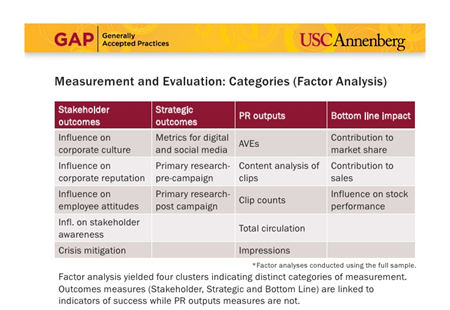
- Predictive analytics helps us understand what we might expect in the future. A great example of predictive analytics is found in the movie “Moneyball” where Oakland A’s general manager Billy Beane relies on predictive analytics to determine how often someone gets on base. Other examples include Match.com and Tinder. Companies that mine big data, like Datameer[i], provide the predictive tools used by communications practitioners to optimize campaign outcomes. The example below highlights tech press coverage of “big data” stories and spotlights top writers and publications that would be statistically more likely to accept a pitch about “big data.”
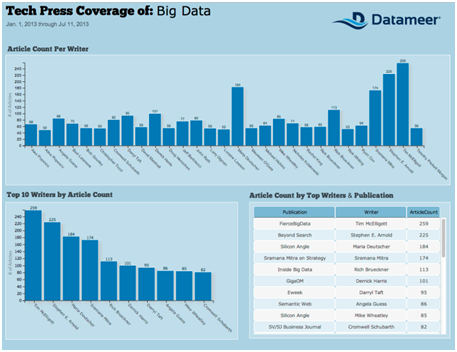
- Prescriptive analytics tries to answer the question, “How do we make something happen?” This analysis goes even further than predicting outcomes by factoring in results of predictions and the potential risks or rewards. A common example is found with both Amazon and Netflix who both use prescriptive analytics when offering personalized suggestions for their consumers. For communications practitioners prescriptive analytics frequently leverage big data to pre-empt consumer complaints and reverse negative brand image by scouring social media for relevant data. In fact, many emerging mobile and social platforms designed to foster engagement and collaboration with consumers can be great examples of how prescriptive analytics is applied to “make something happen” between consumers and brands[i].
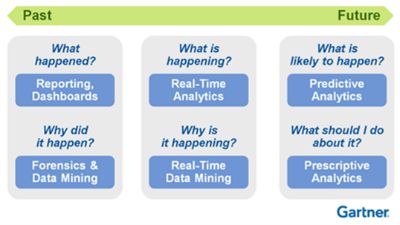
Understanding Analytics to Build Better Insights
Not many people in our profession take a job because they love math or analytics. However, data analytics and statistics are increasingly necessary to impactful integrated communication. To help practitioners navigate the increasing use of data, the Public Relations Society of American (PRSA) has partnered with the American Statistical Association (ASA) to develop a Best Practices Guide for Use of Statistics in Public Relations.
As communication become more integrated, channels more complex, and organizations better integrated themselves, communication practitioners will need to develop an appreciation of analytics to help their business partners gain insight into the markets, and the individual consumers they serve. As Walter Montgomery notes, the skills needed to be an effective communicator are different and are far more demanding than ever before. Developing an appreciation and understanding of analytics helps make our internal and external communications more precise, predictive, sophisticated and significantly more valuable to our both our businesses and clients.

Dr. Norman Booth is Vice President of Business & Industry at Coyne PR
[i] http://steinvox.com/blog/big-data-and-analytics-other-perspectives-worth-a-look-part-4/
[i] http://www.slideshare.net/text100global/communication-and-public-relations-generally-accepted-practices-study-from-usc-annenberg-for-hypertextlive
[i] http://knowledge.wharton.upenn.edu/article/how-ceos-can-adopt-a-21st-century-approach-to-organizational-communication/
[ii] http://www.mu-sigma.com/analytics/ecosystem/dipp.html
[iii] https://www.meltwater.com/blog/media-vmonitoring-success-tip-5-meltwater-news-dashboard/


































.jpg)


